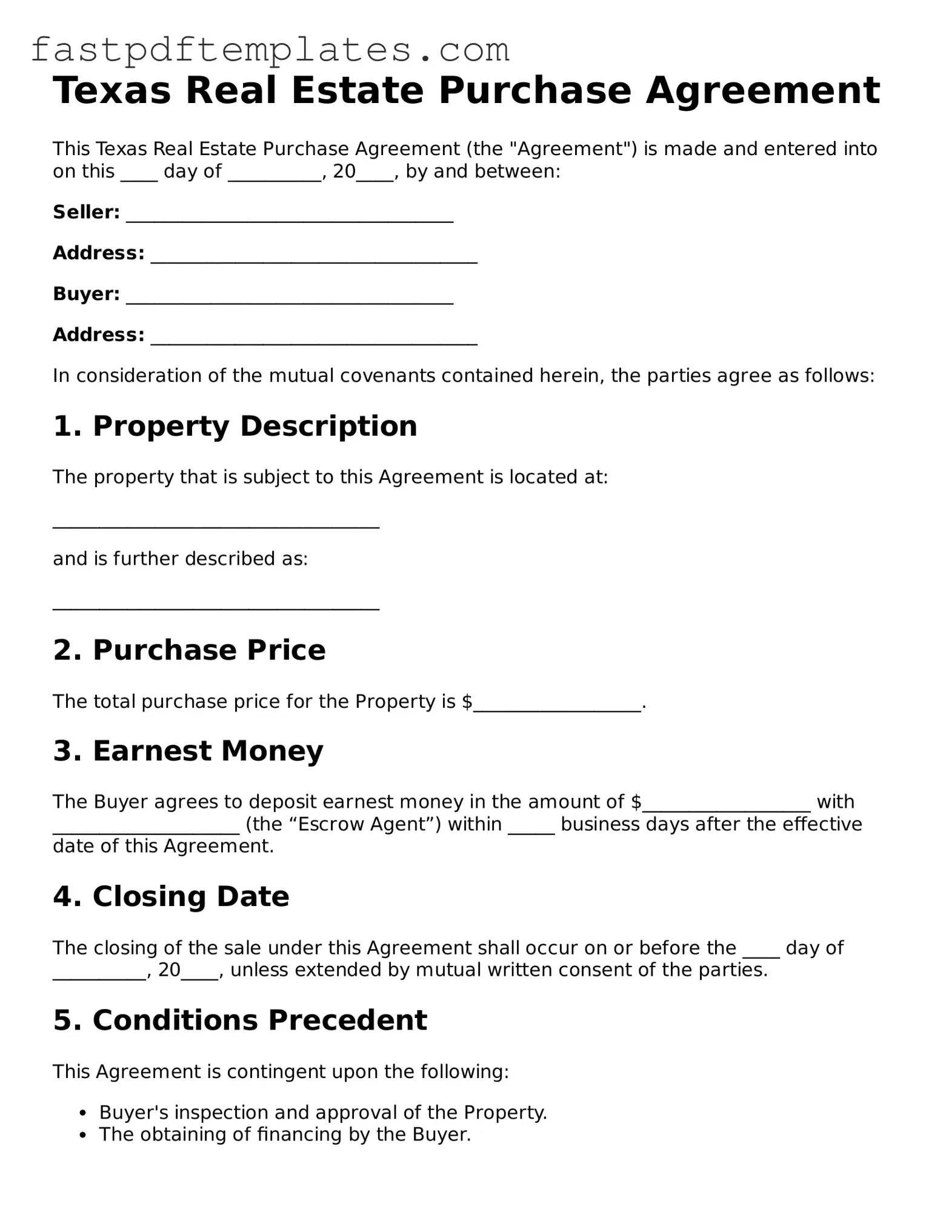Texas Real Estate Purchase Agreement
This Texas Real Estate Purchase Agreement (the "Agreement") is made and entered into on this ____ day of __________, 20____, by and between:
Seller: ___________________________________
Address: ___________________________________
Buyer: ___________________________________
Address: ___________________________________
In consideration of the mutual covenants contained herein, the parties agree as follows:
1. Property Description
The property that is subject to this Agreement is located at:
___________________________________
and is further described as:
___________________________________
2. Purchase Price
The total purchase price for the Property is $__________________.
3. Earnest Money
The Buyer agrees to deposit earnest money in the amount of $__________________ with ____________________ (the “Escrow Agent”) within _____ business days after the effective date of this Agreement.
4. Closing Date
The closing of the sale under this Agreement shall occur on or before the ____ day of __________, 20____, unless extended by mutual written consent of the parties.
5. Conditions Precedent
This Agreement is contingent upon the following:
- Buyer's inspection and approval of the Property.
- The obtaining of financing by the Buyer.
6. Closing Costs
Closing costs will be divided as follows:
- Seller shall pay: ___________________________________
- Buyer shall pay: ___________________________________
7. Governing Law
This Agreement shall be governed by and construed in accordance with the laws of the State of Texas.
8. Signatures
This Agreement may be executed in counterparts. By signing below, the parties indicate their acceptance of the terms herein:
Seller Signature: ___________________________ Date: ________________
Buyer Signature: ___________________________ Date: ________________
